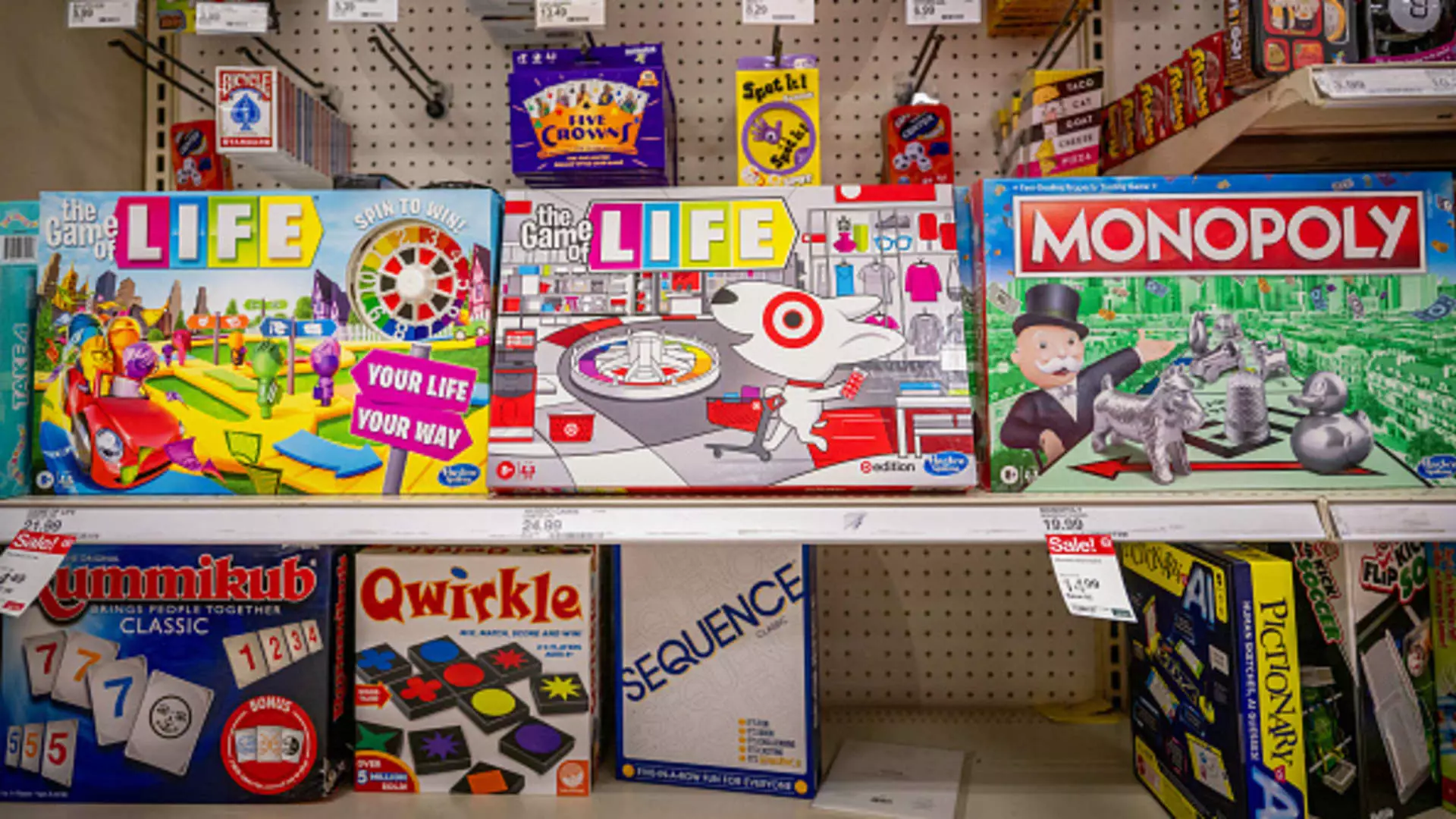The unfolding drama of the U.S.-China trade war, now a persistent reality under the Trump administration, has sent tremors through various industries. Hasbro, one of the largest players in the toy sector, finds itself at a crossroads influenced by the unpredictable tariffs imposed on imports from China. With estimates suggesting a potential blow of up to $300 million to its bottom line, the toy giant is presented with a stark choice: adapt or succumb. This conundrum highlights an unsettling but undeniable truth: tariffs are not merely abstract policy decisions; they have concrete impacts on businesses, consumers, and, ultimately, the economy at large.
The Uncertainty of Trade War Economics
At the heart of Hasbro’s concerns lies a lack of clarity regarding tariff rates. As revealed during a recent earnings call, the company’s financial forecasts are burdened with contingency plans that stretch across a wide spectrum of potential tariff scenarios. The stark range from 50% to an eye-watering 145% reveals a landscape of volatility that is destabilizing not just to Hasbro but to the entire toy industry. The anticipation of higher production costs and diminished profit margins encapsulates a scenario where corporations like Hasbro are stuck between a rock and a hard place; they must simultaneously navigate profitability while shielding their consumers from the inevitable backlash of inflated prices.
CEO Chris Cocks’ assertion that no company can truly insulate itself from these levies rings entirely true. The reality is that tariffs do not simply affect the company’s balance sheets; they ripple outwards, creating “structural costs” that can decimate jobs and disrupt the livelihoods of individuals who depend on these toy giants for their employment. The ramifications of such economic policies are stark: higher prices mean less accessible toys for families, particularly those wishing to engage in leisure activities that connect loved ones.
Manufacturing: A Dichotomy of Costs and Locations
Hasbro’s dilemma is compounded by the geographical and economic differences in production costs. While the company acknowledges that some aspects of its business, such as the U.S. games division, are less vulnerable due to strategic domestic sourcing, the toy segment is tethered tightly to Chinese manufacturing. The labor and operational costs in China have allowed Hasbro and similar companies to thrive; however, with the looming specter of tariffs, this advantageous model risks rapid obsolescence.
Cocks highlights a potential pivot towards alternative manufacturing hubs, such as Turkey, to maintain some semblance of cost-effectiveness. Yet, this poses its own set of challenges, as transporting products globally will ultimately inflate expenses. The quality of materials and specialized methods that have been honed over decades cannot be replicated overnight. The depth of Hasbro’s dependency on Chinese manufacturing raises a larger question: in an era where supply chains have never been more exposed to geopolitical risks, how should companies like Hasbro recalibrate their operational strategies?
Consumer Impact: Pricing and Accessibility
The inevitable price hikes that Cocks foresees might pose the most concerning threat of all. When tariffs manifest as elevated consumer prices, they strike directly at the heart of the markets that businesses serve. Families may be forced to make concessions on spending, placing toys—often seen as luxuries—lower down on their shopping lists. For a company whose identity is tied to joy and imagination, the notion of accessibility being curtailed does more than hurt the bottom line; it contradicts Hasbro’s brand ethos.
Moreover, the sensitivity of pricing in the toy market cannot be understated. The competitive landscape demands agility and an adaptation to consumer sensitivities, but how long can this trade-off be sustained without squeezing the lifeblood out of a beloved industry? Rather than offering an avenue for growth, tariffs may ultimately deprive both companies and consumers, further entrenching economic barriers at a time when accessibility should be paramount.
A Call for Change: Navigating the Future of Trade
While Hasbro grapples with the present dilemma, it represents a microcosm of the larger challenge facing American businesses. The company’s cautious optimism for a “more predictable and favorable U.S. trade policy” highlights a glimmer of hope within an otherwise tumultuous landscape. But as Cocks aptly put it, navigating these changes demands both “defense and offense.” The business world shifts swiftly; what remains to be seen is whether Hasbro—and by extension, other corporations—will emerge on the other side of this trade war with resilience intact. As consumers, stakeholders, and citizens, we must call for a more measured and fair approach to trade—a system that puts people before politics and recognizes the interdependency of our global economy.



Leave a Reply